First, let's start with DataFrame 1 (DF1) :
DF1 <- data.frame(c("06/19/2016", "06/20/2016", "06/21/2016", "06/22/2016",
"06/23/2016", "06/19/2016", "06/20/2016", "06/21/2016",
"06/22/2016", "06/23/2016"),
c(1, 1, 1, 1, 1, 2, 2, 2, 2, 2),
c(149, 150, 151, 152, 155, 84, 83, 80, 81, 97),
c(101, 102, 104, 107, 99, 55, 55, 56, 57, 58),
c("MTL", "MTL", "MTL", "MTL", "MTL", "NY", "NY",
"NY", "NY", "NY"))
colnames(DF1) <- c("date", "id", "sales", "cost", "city")
I also have DataFrame 2 (DF2) :
DF2 <- data.frame(c("06/19/2016", "06/27/2016", "06/22/2016", "06/23/2016"),
c(1, 1, 2, 2),
c(9999, 8888, 777, 555),
c("LON", "LON", "QC", "QC"))
colnames(DF2) <- c("date", "id", "sales", "city")
For every rows in DF1, I have to look if there is a row in DF2 that has the same date and id. If yes, I have to replace the values in DF1 by the values in DF2.
DF2 will always have less columns than DF1. If a column is not in DF2, I must keep the original value that was in DF1 for that specific column.
The final output would like this:
results <- data.frame(c("06/19/2016", "06/20/2016", "06/21/2016", "06/22/2016",
"06/23/2016", "06/19/2016", "06/20/2016", "06/21/2016",
"06/22/2016", "06/23/2016"),
c(1, 1, 1, 1, 1, 2, 2, 2, 2, 2),
c(9999, 150, 151, 152, 155, 84, 83, 80, 777, 555),
c(101, 102, 104, 107, 99, 55, 55, 56, 57, 58),
c("LON", "MTL", "MTL", "MTL", "MTL", "NY", "NY",
"NY", "QC", "QC"))
colnames(results) <- c("date", "id", "sales", "cost", "city")
Do you have any suggestions?
